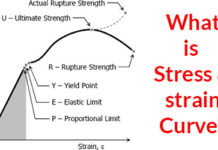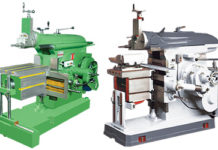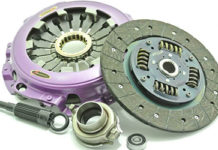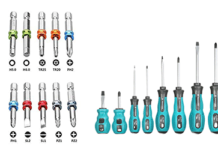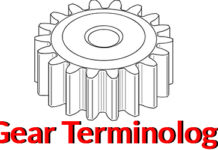Contents
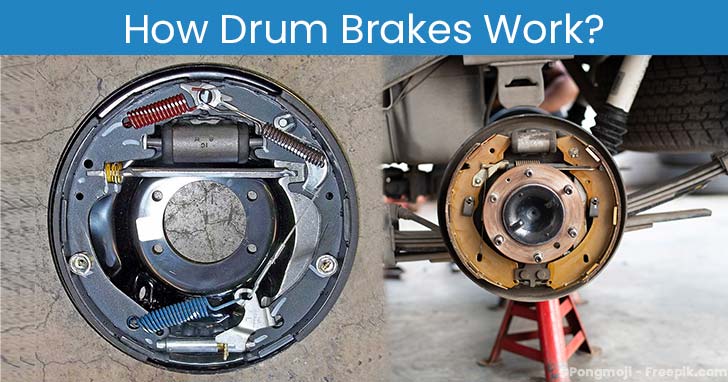
Brake is a very essential part of any moving vehicle. The brake is a mechanical device that reduces or stops the movement of the vehicle by friction. There are various types of brakes in different vehicles. In this article, we will discuss How Drum Brakes works, drum brake diagram and its parts, advantage, and disadvantage.
The brake system can be install on the front and rear wheel of the vehicle.
The brakes enhance the handling of the vehicle on road and provide the safety of vehicles and passengers. No one imagines driving any type of vehicle without a brake.
To know about Drum Brake, first, we have to understand, the function of its parts and working principle.
First, understand the Working Principle of the Drum Brakes
The brake drums rotate with the wheels and inside each drum have brake shoes attached with the brake linings. When pistons press against the drums, it generates braking force from inside and this reduces the movement of the wheel. The friction converts kinetic energy into thermal energy. It is also important to have proper ventilation in the drum brake for heat dissipation.
Parts of Drum Brakes
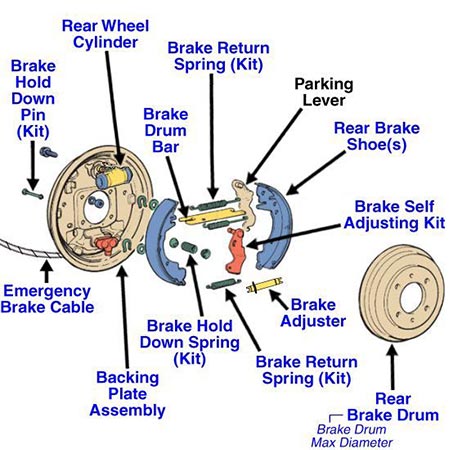
The drum brake system is attached to the backplate of the wheel and it is not turning with the wheel
1. Brakes Drum
The brake drum is a cast iron housing and works to stop the vehicle with the brake shoe. The drum brake is bolted on the hub of the wheel and rotates with the hub.
2. Brake Hub
This is the frictional part of the drum brake and without this, the brake cannot work. There is a brake lining in the outer curve of the brake shoe. The brake lining makes contact with the brake drum to stop or reduce the speed of the vehicle.
There are two types of Brake Shoe
- Primary Brake Shoe – It has large Lining Material
- Secondary Brake Shoe – It has small Lining Material
3. Wheel Cylinder
The wheel cylinder is work to force the brake shoe outward to apply the brake. This connects to the master cylinder. It has pistons that move upward when the brake pedal is applied and forces the brake shoe to the inner surface of the drum.
4. Retracting Spring
This is used to retract the brake shoe after the brake is applied. There are two return springs in a drum brake, one is for the primary shoe and the second is for the secondary shoe.
5. Self-adjuster
This maintains the gap between the brake shoe and drum so, it maintains the distance between them when the pedal is not pressed. If the brake lining wears out, the gap between shoe and drum increases, and it can adjust again to maintain distance.
Working of Drum Brakes
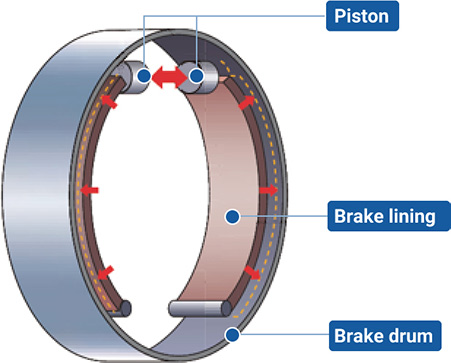
- When the brake pedal is press, it has fluid in the master cylinder and it allows the piston of the wheel cylinder to expand. This pressure reaches the wheel by tubing filled with brake oil.
- Then the outward motion of the piston of the wheel cylinder pushes the brake shoe outward
- When the brake shoe lining touches the inner surface of the drum and friction generates between brake shoe and drum, the speed of the vehicle reduces and it stops
- When the force is removed from the brake pedal, the retracting springs draw the brake shoe inside and there is no contact between friction lining and drum. then the brake is in its original position.
- After that, the adjusting screw which is present at the bottom that is controlling to maintain the minimum gap between the drum and brake shoe. However, the lining is wear out the gap between the drum and the brake shoe is increases.
Advantage and Disadvantage of Drum Brakes System
Advantages
- Less Parts
- Simple Design
- Low maintenance cost
- Long-Lasting
- Easy and cost-effective to manufacture
Disadvantages
- There is low braking force compared to Disc Brake
- The brakes are fade when applying for a longer time
- There is friction produce in the breaking then easily dissipated which may reduce brake life
- If the brake gets wet, it won’t work properly as it took a long time for water to come out from the drum.
This is the information about the How Drum Brake Work, Drum Brake Diagram and its Parts information, also we discuss Drum Brake Advantages and Disadvantages


